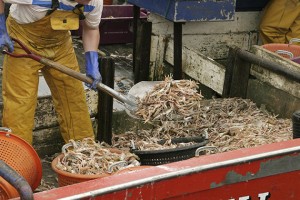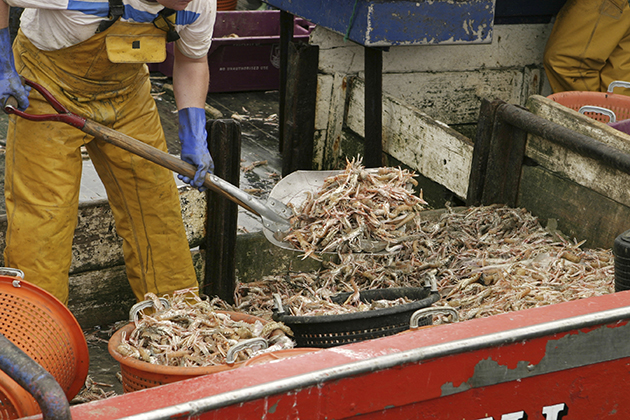
By identifying the most efficient fishing practices and behaviors, a new model developed by economists at the University of Connecticut and Duke University could help fishermen rake in larger paychecks while reducing the risk of fishery depletion.
The most efficient practices could lead to as much as a 49 percent increase in profits or 20 percent increase in total revenues, according to Ling Huang, assistant professor of economics at the University of Connecticut, and her coauthor Martin D. Smith, professor of environmental economics at Duke’s Nicholas School of the Environment.
The empirical bioeconomic model was created using six years of detailed fishing data from the North Carolina shrimp fishery, provided to the researchers by the North Carolina Division of Marine Fisheries.
The researchers tracked every shrimp vessel that went out to sea, what it caught, when it fished, what price it sold its catch for, and what equipment was used. They also monitored daily weather conditions, weekly fuel prices, fishery closures, and other external factors that affect fishermen’s decisions on whether to fish or not.
Huang and Smith analyzed the data using recently developed econometric modeling techniques to identify which individual fishing practices and decisions led to profitable and sustainable catches, and which led to low returns and over-exploitation.
The traditional management approach of seasonal closure is far from enough and increased the revenue by only two percent, according to Huang. “There is a big gap between current management status and the optimal scenario that we are able to bridge by allocating catch limits efficiently.”
It turns out even allocating sustainable catch limits to individual fishermen on an annual basis was not universally efficient. In some cases, it was actually counterproductive, because it forced fishermen into a ‘race to fish’ early in the season that led to falling profits and over-exploitation.
“Our analysis shows there’s a sweet spot between having too much bureaucracy – such as daily quotas – and too little,” says Huang. “That’s the spot we have to hit if we want to maximize profits and sustainable catches. To get there, you have to dig down to the fine scale.”
The key, she says, is to match the management approach of each individual fishery to the daily dynamics of its fishermen, its seasonal patterns, and the life history of the species being harvested.
Conventional wisdom says that congestion – having too many boats out at the same time – is bad because it makes it harder for individual fishermen to catch at the level they are used to, and profits drop. But it does not always prove true.
The researchers found that congestion may have long-term benefits that fishery managers are overlooking. In some cases, congestion can actually increase potential late-season profits and reduce the risk of fishery depletion.
When profits drop due to congestion, fishermen tend to fish less, which means more of the shrimp left in the water grow to larger sizes and can be harvested later in the season for higher prices, say the researchers.
Huang and Smith’s study focused primarily on the open access North Carolina shrimp fishery, but the insights they gained could also help improve how other fisheries are managed, they say.
“Natural resources management is a dynamic problem by its nature. Multiple generations of economists have worked on this important area, most of time in theory,” says Huang, “However, the theoretical framework is very hard to be directly applied to empirical quantification. Thanks to the data availability, recent methodological development and computation power improvement, the natural resources management can be brought to a new level.”
Huang and Smith published their study in this month’s issue American Economic Review, a leading peer-reviewed journal in economics. Funding came from the NOAA Center for Sponsored Ocean Research.



